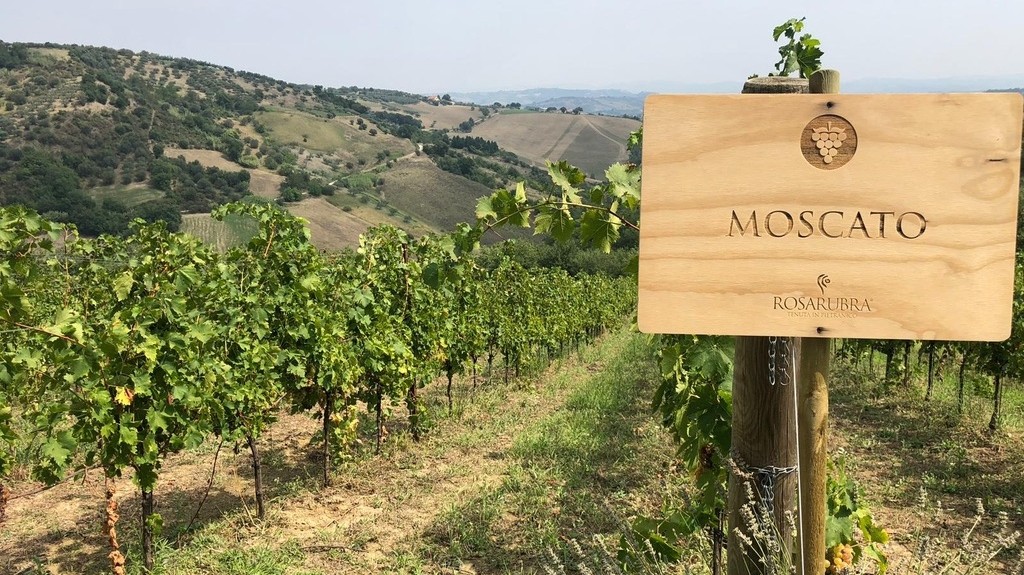Vine & Varietals
Moscato
When the topic of conversation revolves around the “vines”, sooner or later the moment arrives when one must necessarily address a complexed one, with which it is difficult even to establish the introduction.
This is the case of Moscato, a vine that could be talked about for hours, probably the grape with the most ancient origins ever grown in Italy.
Origins
Between legend and reality, the origins of Moscato, whose name derives from “muscus” due to the fragrant aroma of musk it releases, could date back to the eighth century B.C. from the Greeks or later by the Romans with the well-known Apicae or Apianae grapes.
A vine that began to be known and widespread in the Middle Ages thanks to the well-known Venetian trades and which today boasts a multitude of varieties that differ in colour, grown for the table or for wine production, for the shape of the grape bunch (DNA) or for the location of production.
Aromatic vines
An extraordinary vine which, together with Brachetto, Gewürztraminer and Malvasia, is part of the great family of aromatic vines, proposed in the dry and sweet styles, still or sparkling versions. And to have a minimum idea of the vastness of the subject, we include in a rigorous alphabetical order just a few examples: Moscato di Alessandria, Moscato di Acqui, Moscato Bianco, Moscato Giallo, Moscato Rosa, Moscato di Saracena, Moscato di Scanzo, Moscato di Terracina, and many more.
A vine very sensitive to the type of soil in which it is cultivated, so much so as to prefer soils with a prevalence of tuff/volcanic ash and clay, sometimes even sandy and possibly at altitudes ranging between 200 and 300 meters, exactly like the terroir of the region in which it has obtained the best results, namely Piedmont (reg. Catalogue of national vine varieties since 1970).
These grapes produced wonderful, refined, elegant, ample wines, which, depending on their type, vinification or sparkling winemaking, amaze with their bright and brilliant appearance in shades of yellow and red, depending on the berries used, as well as for their incredible consistency.
Wine tasting
The aromas are intense and persistent, ranging between withered flowers and dried fruit, to syrup, candy, depending on the residual sugar: peach, wisteria, lime, sage, citrus, honey, musk and sweet spices, are just some of the heavenly sensations that are delivered to us.
The taste is flooded with multiple and complex aromas, which confirm the olfactory sensations, often supported by a disruptive sweetness, in perfect balance with an explosive acidity that softens the taste, to the point of making us perceive slenderness instead of the often a sturdy structure, granting it rare elegance.
Food pairing
Regarding the food pairing of muscat, obviously this varies according to the wine that was conceived and therefore to the vinification or sparkling wine produced. And even just for mere sentimentality, I always love to imagine it as “the sweet wine par excellence” and then taste it in accordance to the dessert and by contrast with mature or blue cheese.
Service
Regarding the serving temperature, we know that it can vary according to the characteristics of the wine and also to one’s personal taste, and remembering that low temperatures enhance the perception of hardness – including acidity – while the high ones enhance those of softness – including sugars – I leave the taster the freedom to modify the thermal range by a few degrees.
Recommended glass
We finish with the glass, very important for any wine but even more so when the grape variety is aromatic or the wine is sweet.
Its shape must help us to perceive the many aromas available and there is more than one, suitable not only for the type of grape but also for the type of wine to be tasted. The ideal glass is the “coppa”, created to appreciate sweet sparkling wines, followed by the small tulip for the late harvest and the Sautern glass for dessert wines.


